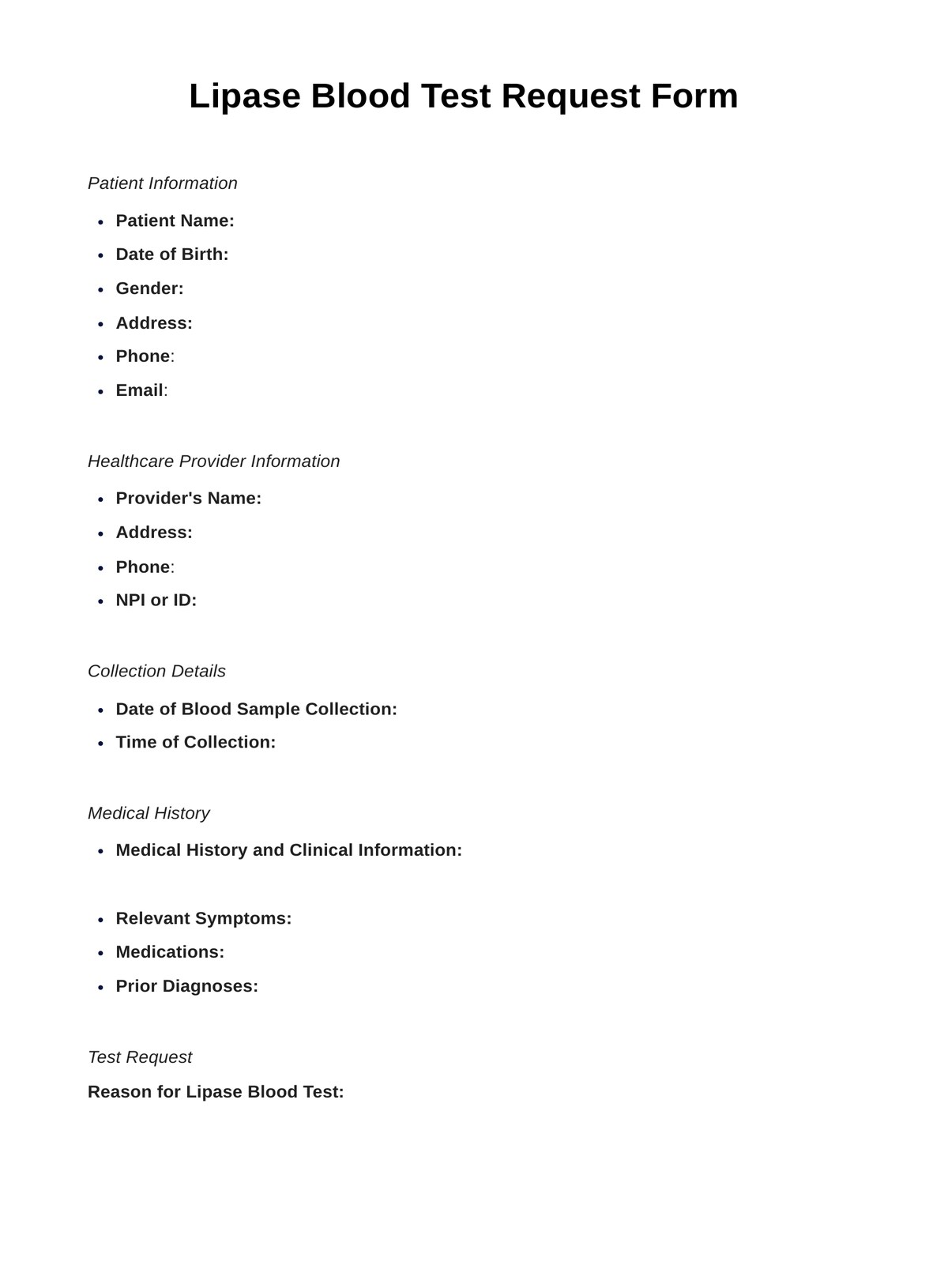Healthcare providers, including doctors, gastroenterologists, and emergency room physicians, typically request Lipase Blood Tests.

Lipase Blood
Accurate lipase blood test for pancreas and digestion. Understand results and diagnose conditions. Essential for healthcare professionals.
Use Template
Lipase Blood Template
Commonly asked questions
A blood sample is collected from a patient's vein, sent to a laboratory, and analyzed to measure lipase enzyme levels, providing insights into pancreatic health and related conditions.
The test usually takes just a few minutes to collect the blood sample. Results are typically available within a few hours to a few days, depending on the laboratory's turnaround time.
EHR and practice management software
Get started for free
*No credit card required
Free
$0/usd
Unlimited clients
Telehealth
1GB of storage
Client portal text
Automated billing and online payments











